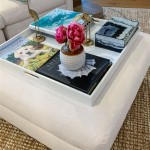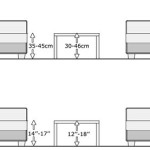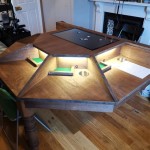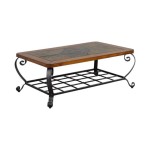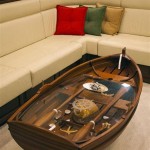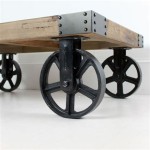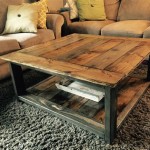What Size Should a Bedside Table Lamp Be?
Selecting the appropriate size for a bedside table lamp is a crucial aspect of bedroom design that significantly impacts both the room's aesthetic appeal and its functionality. The ideal size isn't a universal measurement, but rather a range determined by several factors, including the height of the bedside table, the overall size of the room, and the intended use of the lamp itself. A well-chosen table lamp provides adequate illumination for reading, creates a comfortable ambiance, and complements the surrounding décor.
Many people underestimate the importance of bedside lighting. It’s often an afterthought, resulting in a lamp that's either too small to provide sufficient light or so large that it overwhelms the space. A properly sized lamp, on the other hand, integrates seamlessly into the room, enhancing its visual harmony and improving the overall user experience. This article will explore the key considerations when determining the optimal size for a bedside table lamp, focusing on height relative to the table and bed, shade size proportions, and the functional needs of the user.
Understanding the Relationship Between Table Height and Lamp Height
The most critical factor in determining the appropriate size of a bedside table lamp is its height relative to the bedside table and the bed itself. The goal is to position the light source at a level that provides optimal illumination for tasks such as reading or using a mobile device without causing glare or strain. A general guideline suggests that the bottom of the lampshade should be approximately at eye level when you are sitting up in bed. This will ensure a focused and comfortable light for reading.
To calculate the ideal lamp height, first, measure the height of your bedside table. Most bedside tables typically range from 24 to 30 inches in height. Next, consider the height of your mattress. Then, sit in bed and measure the distance from the top of the mattress to your eyes. Subtract the bedside table height from the eye-level measurement. The resulting number will give you a rough estimate of the ideal lamp height and can vary from person to person, depending on height and personal preference.
For instance, if your bedside table is 28 inches tall, and the distance from the top of your mattress to your eyes is 48 inches, then the ideal lamp height would be around 20 inches (48 - 28 = 20). This means a lamp with a total height (base and shade) of approximately 20 inches would position the light at an optimal level. However, this is just a starting point; adjustments may be necessary depending on the specific design of the lamp and the shade.
It's essential to remember that these are guidelines and not strict rules. Personal preference plays a significant role. Some individuals may prefer a slightly taller lamp for a broader spread of light, while others may prefer a shorter lamp for a more focused beam. Experimentation and visual assessment are key to finding the perfect fit. Consider using adjustable or dimmable lamps to fine-tune the light output and further enhance usability.
A lamp that is too short will necessitate leaning forward to read, potentially causing neck strain and discomfort. Conversely, a lamp that is too tall can create glare and cast light upwards, which may be distracting and less effective for focused tasks. Proper height selection ensures comfortable and ergonomic lighting for nighttime activities.
The Importance of Shade Size and Proportions
The size and shape of the lampshade are equally significant in determining the overall balance of a bedside table lamp. The shade not only affects the direction and diffusion of light but also contributes to the lamp's aesthetic appeal. A lampshade that is disproportionately large or small can disrupt the lamp's visual harmony and impact the overall look of the bedroom.
A general rule of thumb is that the lampshade's height should be approximately two-thirds to three-quarters of the base's height. This creates a balanced and visually pleasing proportion. The width of the shade should also be proportionate to the base; a shade that is too wide can overwhelm a slender base, while a shade that is too narrow can make a wider base appear bulky.
The shape of the shade also influences its functionality. A wider lampshade will distribute light more broadly, creating a softer and more ambient glow. A narrower shade will focus the light downwards, making it ideal for reading. Drum shades offer a contemporary look and provide a more even distribution of light, while empire shades are more traditional and direct the light upwards and downwards.
When selecting a lampshade, consider the material as well. Lighter-colored shades, such as white or ivory, will allow more light to pass through, creating a brighter and more airy ambiance. Darker-colored shades will absorb more light, resulting in a warmer and more subdued glow. The material of the shade also affects the texture and quality of the light, with linen and cotton providing a softer and more diffused light compared to materials like plastic or metal.
The lampshade should also be wide enough to fully conceal the lamp's hardware, including the bulb and socket. This ensures that the light is filtered through the shade, creating a softer and more pleasant illumination. If the hardware is visible, it can create unsightly glare and detract from the lamp's overall aesthetic.
Ultimately, the best way to determine the ideal lampshade size and shape is to visually assess it in conjunction with the lamp base and the surrounding décor. Consider the overall style of the bedroom and choose a lampshade that complements the existing design. Bring the lamp base to the store when shopping for shades to ensure a proper fit and visual match.
Considering Functional Needs and Room Size
The functional needs and overall size of the room are crucial considerations when determining the appropriate size of a bedside table lamp. A smaller room may require a more compact lamp to avoid overwhelming the space, while a larger room can accommodate a more substantial lamp. The intended use of the lamp, whether it's primarily for reading, ambient lighting, or a combination of both, will also influence the size and type of lamp that is most suitable.
If the primary purpose of the bedside lamp is reading, then a lamp with a focused beam of light and adjustable height or angle is ideal. Lamps with adjustable arms or necks allow for precise positioning of the light, ensuring optimal illumination for reading without causing strain. A taller lamp with a narrower shade may be more appropriate in this case, as it will direct the light downwards and provide a more concentrated beam.
For ambient lighting, a lamp with a wider shade and a dimmer switch can create a soft and relaxing atmosphere. A shorter lamp with a broader shade may be more suitable in this scenario, as it will distribute the light more evenly and create a gentle glow. Dimmable lamps offer greater flexibility, allowing you to adjust the light output according to your needs and preferences.
In smaller bedrooms, space is often at a premium. Opting for a smaller lamp can help to maximize the available surface area on the bedside table. Consider lamps with a slender base and a compact shade. Wall-mounted lamps or sconces are also excellent alternatives, as they free up valuable table space and provide a similar level of illumination.
In larger bedrooms, a more substantial lamp can add a touch of grandeur and create a focal point. Larger lamps can accommodate larger shades, which can provide a broader spread of light and enhance the room's overall ambiance. However, it's important to ensure that the lamp is still proportionate to the bedside table and the bed itself, avoiding a lamp that overwhelms the space.
Consider the overall style of the bedroom when selecting the size of the bedside table lamp. A modern bedroom may benefit from a sleek and minimalist lamp, while a more traditional bedroom may call for a more ornate and elaborate lamp. The lamp's size and design should complement the existing décor and contribute to the room's overall aesthetic.
The intensity and color temperature of the light bulb also contribute to the overall ambiance. Warmer light (around 2700K) creates a cozy and inviting atmosphere, while cooler light (around 4000K) is more energizing and suitable for tasks like reading. Experiment with different bulb types to find the perfect balance for your needs and preferences.

How To Customize Super Linear Style Tosconova

Review The Skyview 2 Wellness Lamp Brings Health Benefits To Your Desk

How To Design A Feng Shui Bedroom According Experts

Decorative Night Lights For S Sleep Friendly Options Homeyfad

Hampton Bay Kenway 18 75 In Beige Ceramic Indoor Table Lamp With White Fabric Shade Hd 2717 Bg The Home Depot

The 9 Best Desk Lamps Of 2025 Reviews By Wirecutter

The 9 Best Desk Lamps Of 2025 Reviews By Wirecutter

Meet Karen Abate Bold Journey

Optimizing Bedside Space The Advantages Of Wall And Pendant Lights Over Table Lamps By Janavi Javeri Rtf Rethinking Future
:max_bytes(150000):strip_icc()/ScreenShot2022-04-19at10.06.11AM-fabf07d8f8b3437383ea58416fb2535f.png?strip=all)
Bedroom Lighting Guide How To Light A
Related Posts


